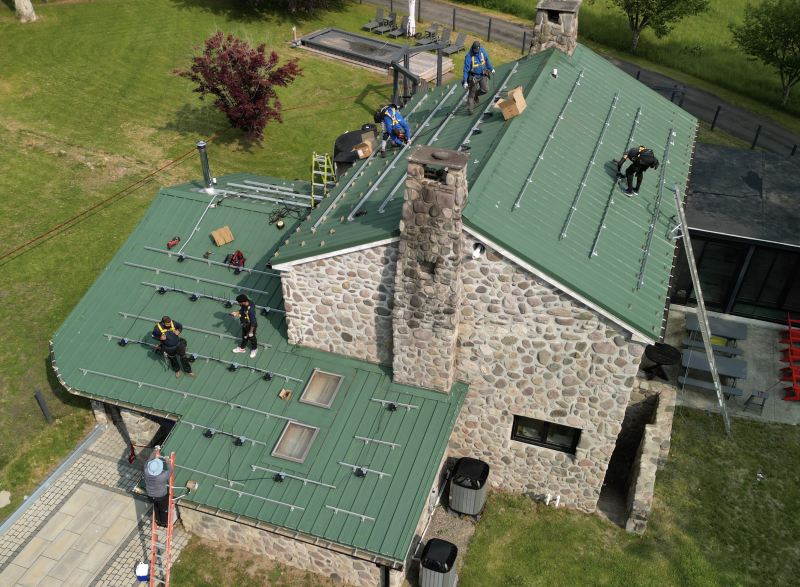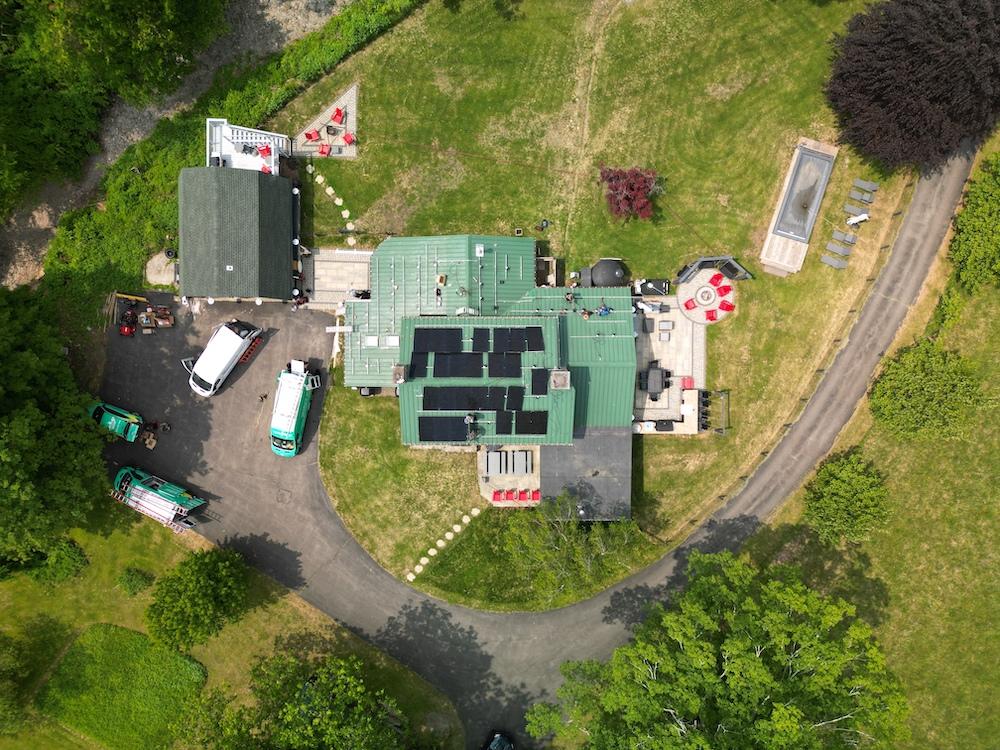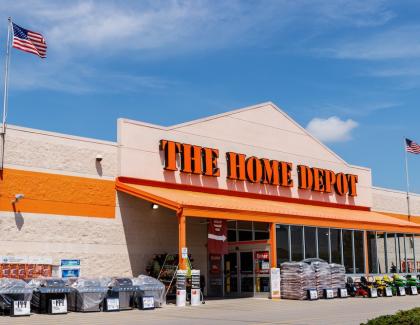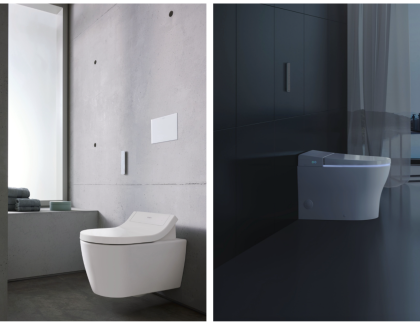Homebuyers are increasingly on board when it comes to environmental stewardship. Builders are seeing more buyers that want to reduce their environmental impact by installing low-flow water features, Energy Star appliances, and solar panels. With the costs associated with each of these, how does a builder deliver that product on budget? When building or renovating a house that incorporates solar power, consider a multi-energy approach, like the addition of propane systems, to help reduce the cost of the solar energy system and increase a home’s energy efficiencies.
Anthony Carrino is a builder, designer, and partner of the Propane Education & Research Council. Over the past two years, he has documented the renovation of his home in the Catskill Mountains, called the Stone House. Carrino has been candid about his goal of owning a near net-zero home. The process began with the retrofit from oil to propane. When he shared news of his plans to further diversify his energy mix at the Stone House, we were excited to learn about the top questions homeowners want to know when adding solar energy to their homes.
How Much Will Solar Cost?
Adding solar to any home, new or existing, can be expensive. The price tag is a big reason Carrino waited two years to pull the trigger and install a 16kW solar energy system at the Stone House. There are several factors that determine the overall cost of a solar system:
- The location of the house
- Number of critical systems in the house that rely on electricity
- Amount of annual sunlight
- Pitch and direction of the roof
Propane can help lower the number of solar panels needed. How? The more appliances that use propane, on average, the lower the amount of electricity used. Propane is a clean, reliable, and affordable energy option. Using propane produces 52 percent fewer greenhouse gas emissions than using an equivalent amount of electricity generated by the U.S. grid.
In the Stone House, propane powers the cooktop, dryer, water heater, pool heater, and outdoor kitchen. Since propane supplies energy to these major systems, the house doesn’t use as much electricity—meaning fewer number of solar panels are needed.

Image: PERC
Are There Incentives to Offset the Costs?
Solar energy incentives can be found through a variety of sources. But there are incentives for propane too.
Rebates and credits from state energy offices and state propane gas associations can make high-efficiency propane-powered heating and water heating systems and other appliances more affordable. Current rebates and credit offers are listed at www.dsireusa.org or propane.com/incentive-programs/residential-appliance-rebates.
The Propane Construction Incentive Program is simple—construction pros can earn money for each new home or remodel completed in a calendar year when qualifying propane appliances are installed.
Does Having Solar Panels Prevent a Home From Losing Power When the Electric Grid Is Down?
Not necessarily. Most grid-tied solar PV systems require the grid to be online to take advantage of the electrons collected by the panels. Alternatively, a person can store solar energy with the additional investment and installation of a battery system, which again increases the overall price. Plus, just because a house can store enough solar energy to power all the appliances doesn’t mean those appliances will operate during a multi-day power outage. This is where propane can help. Homes that are prone to power outages should consider installing a propane standby generator.
Back to our example: the Stone House is prone to multi-day power outages during winter storms. Carrino investigated adding battery storage that also acts as a power source during power outages, but even with three batteries he could only power the house for 24 hours straight. “It was very cost prohibitive,” he shared. Given the amount of time and money invested in the house, Carrino made the decision to keep the propane powered whole home standby generator. Power kicks in in as little as 10 seconds when needed so there’s no disruption to critical infrastructure. Plus, propane is stored on-site, so your customers always have access to energy when they need it.
So, what’s the big takeaway? It will take a mix of energy options like electricity, solar, wind, and propane to make an environmental impact. And it’s up to all of us to educate buyers on the options available to them.
For contractors interested in improving a building’s carbon footprint in an affordable and reliable way, propane is a viable energy solution. Using propane with solar power systems reduces emissions and increases reliability, which is what you want for your customers.
Bryan Cordill is the director of residential and commercial business development at the Propane Education & Research Council. He can be reached at bryan.cordill@propane.com.








Add new comment